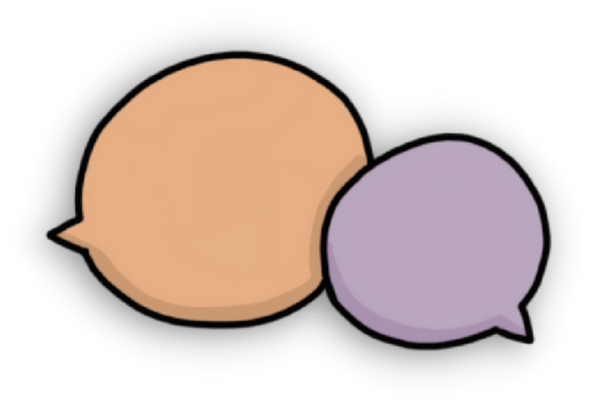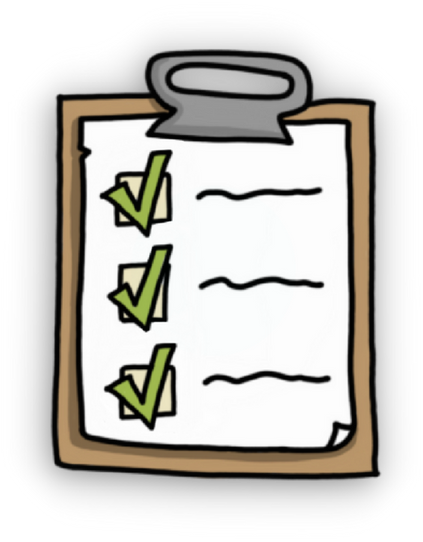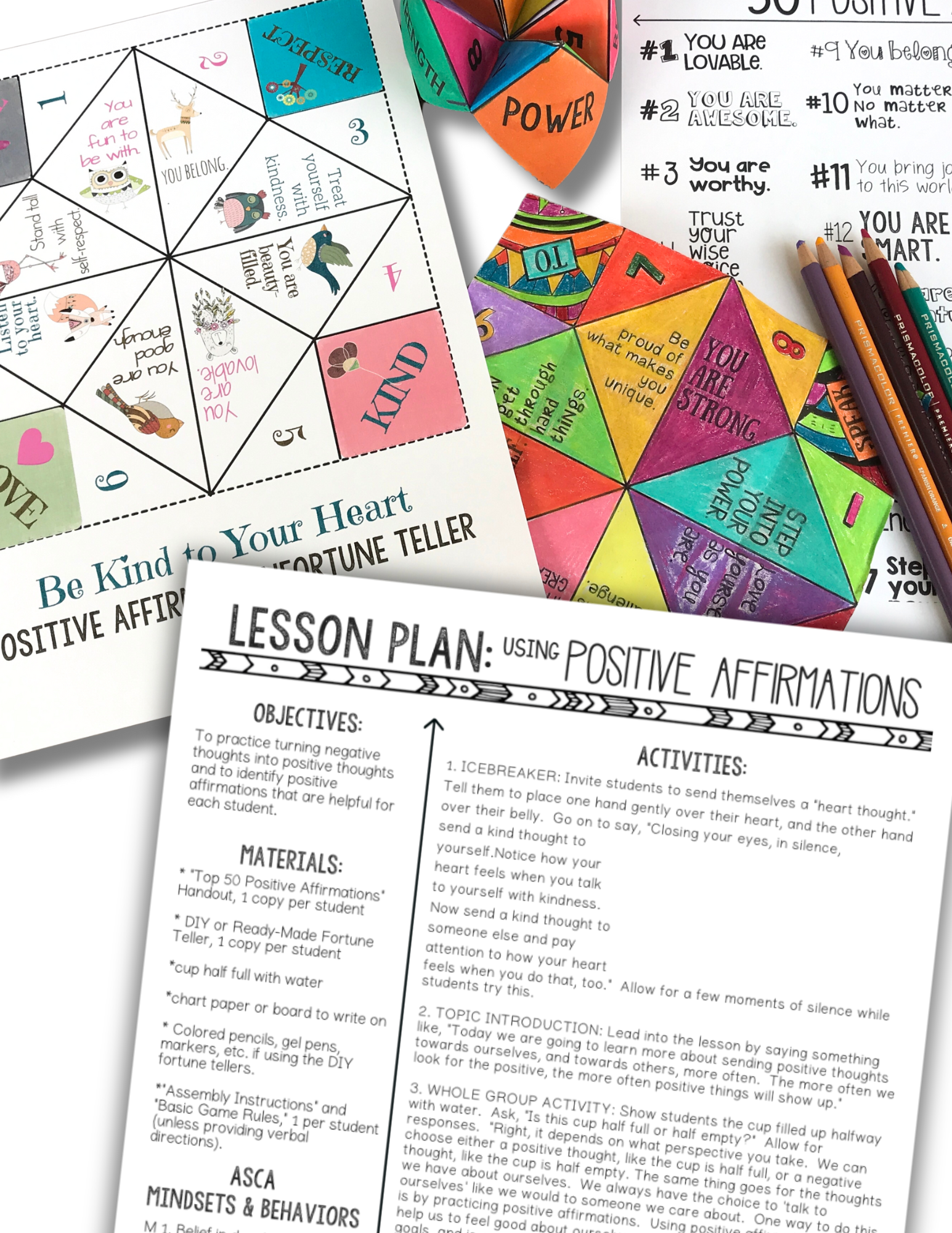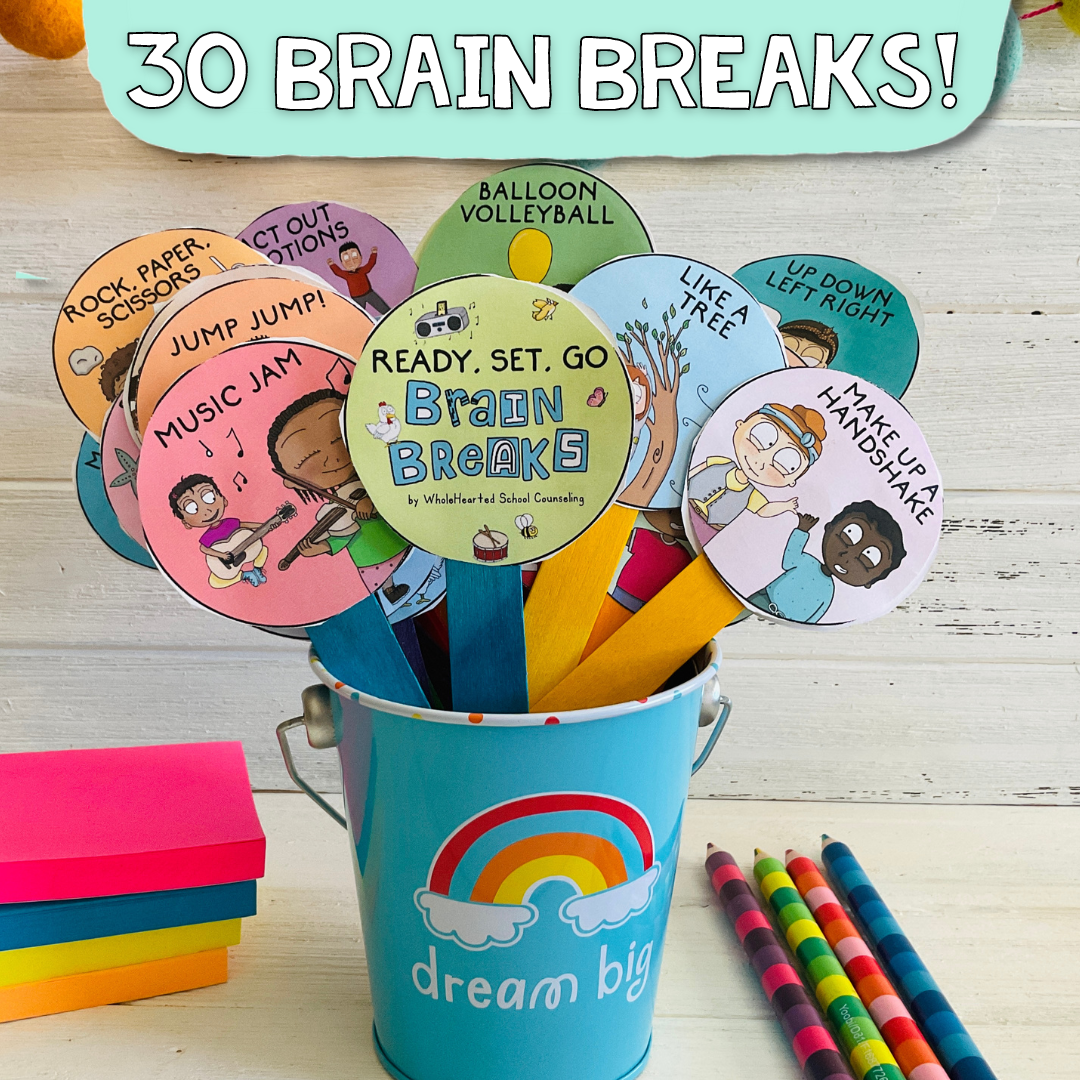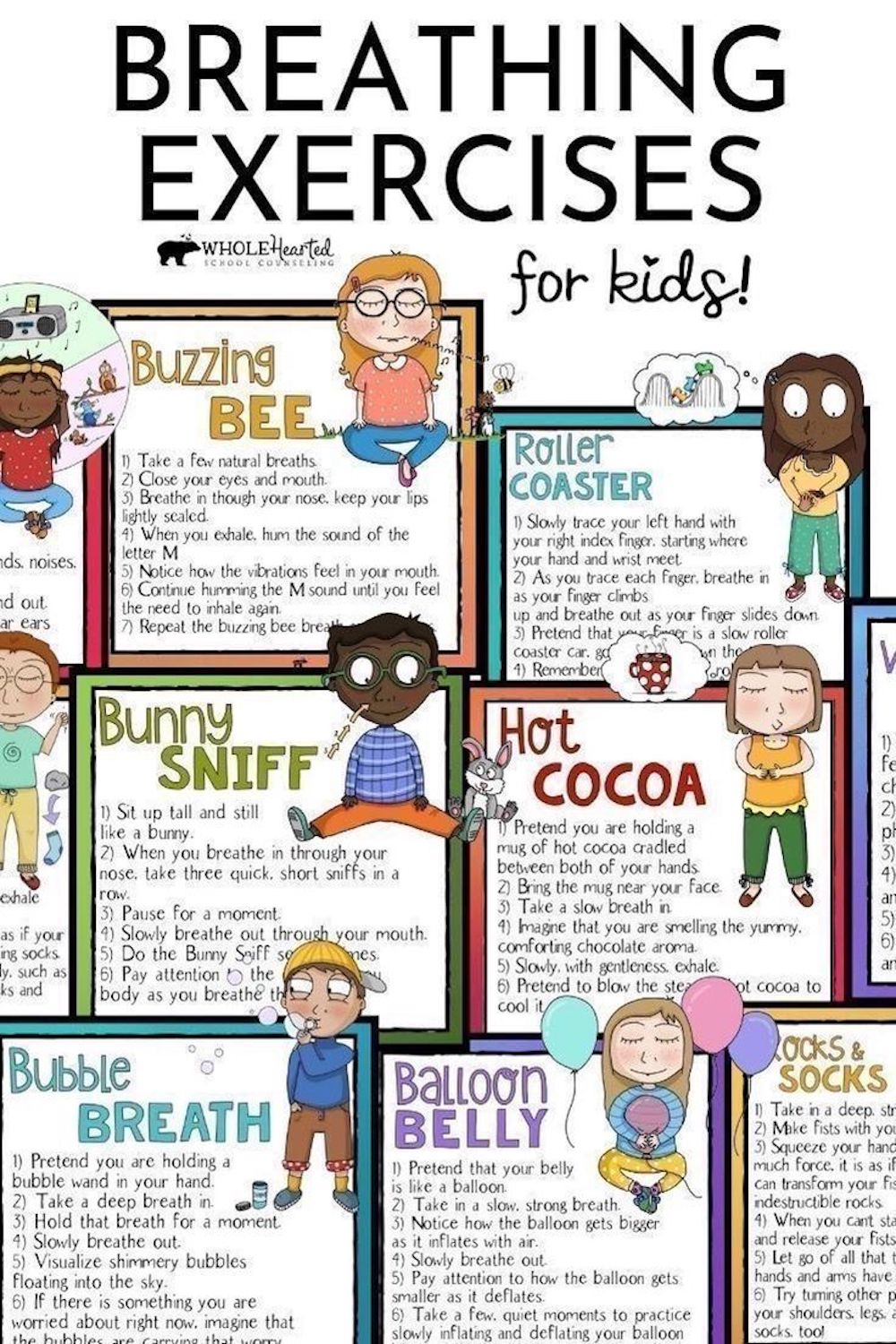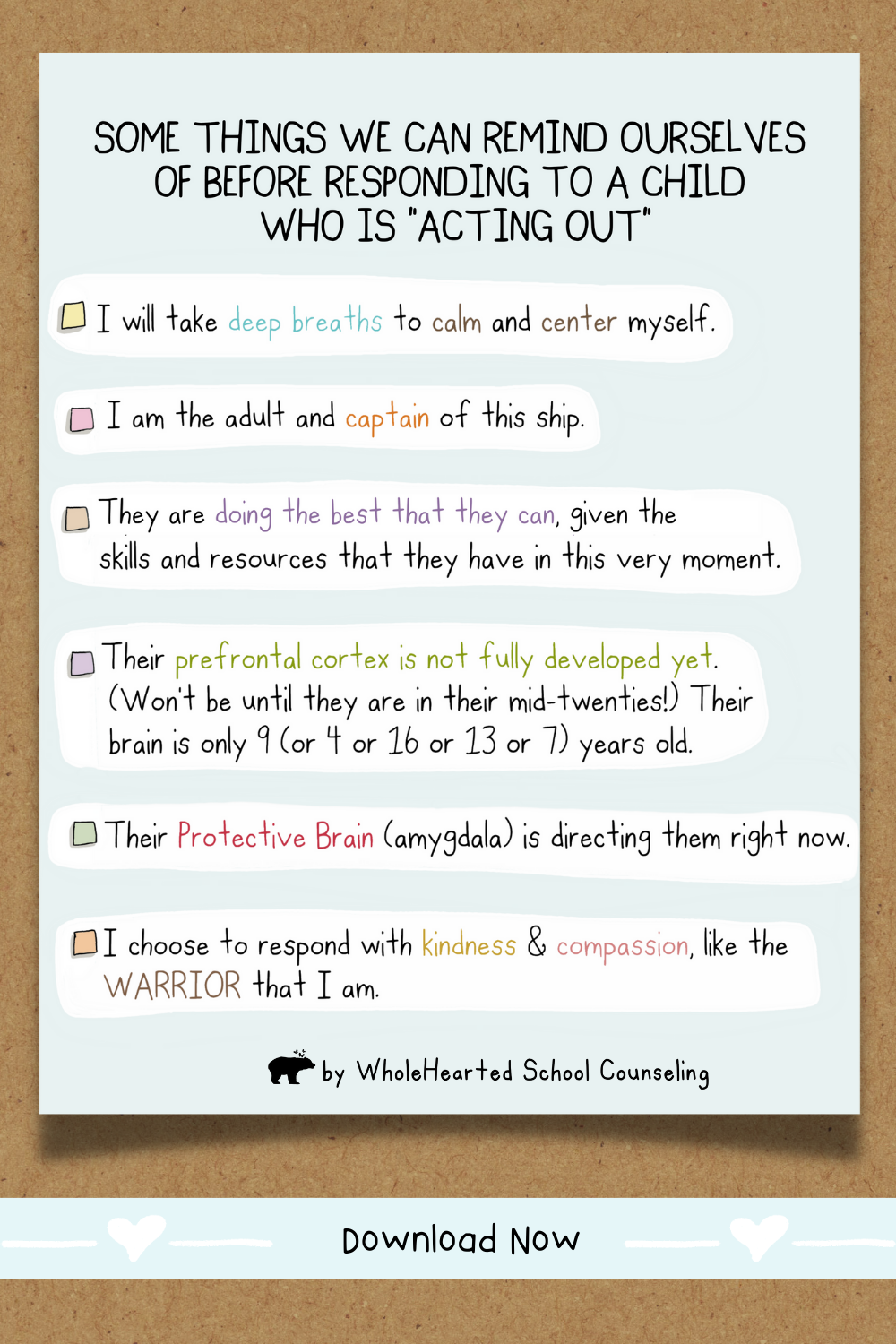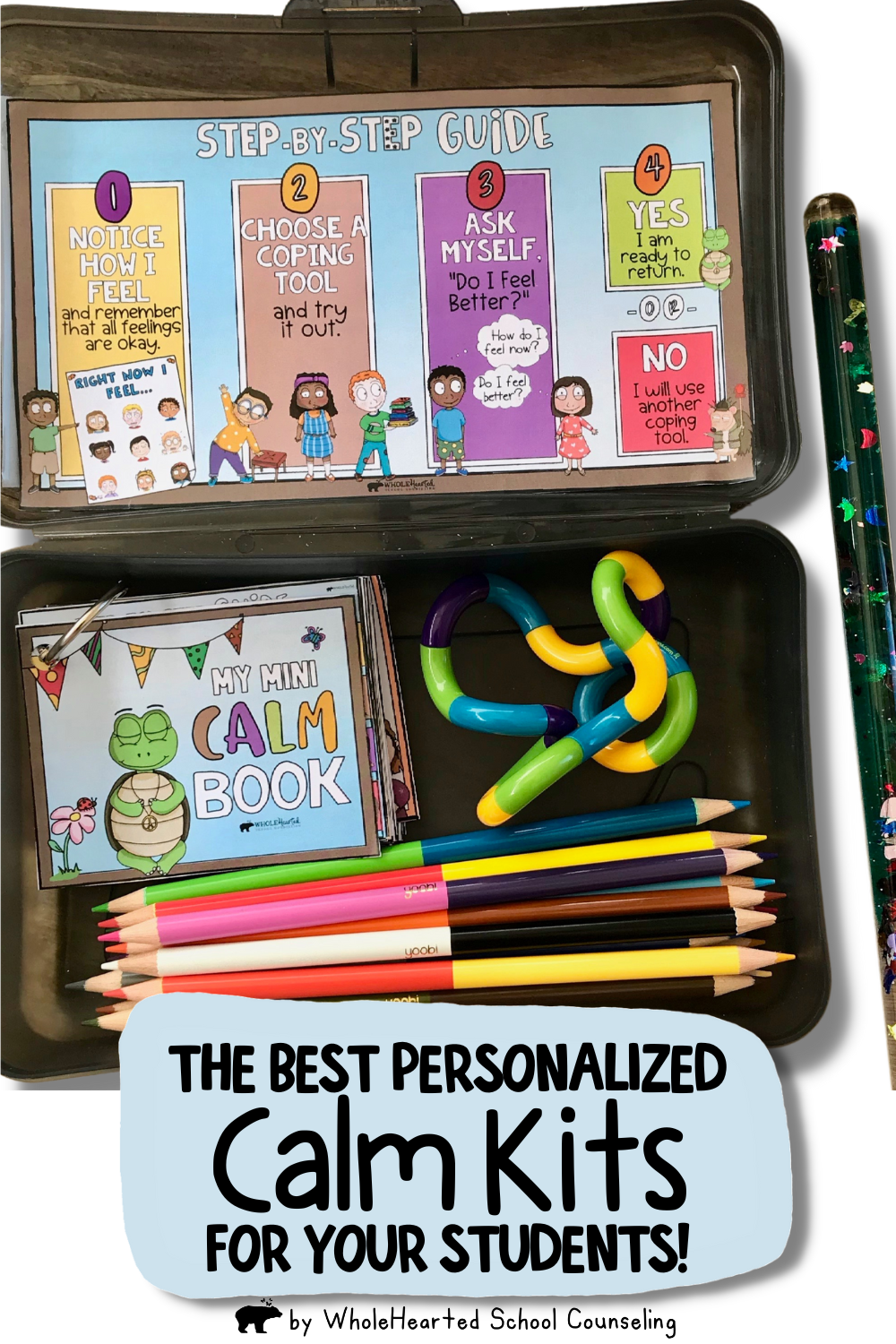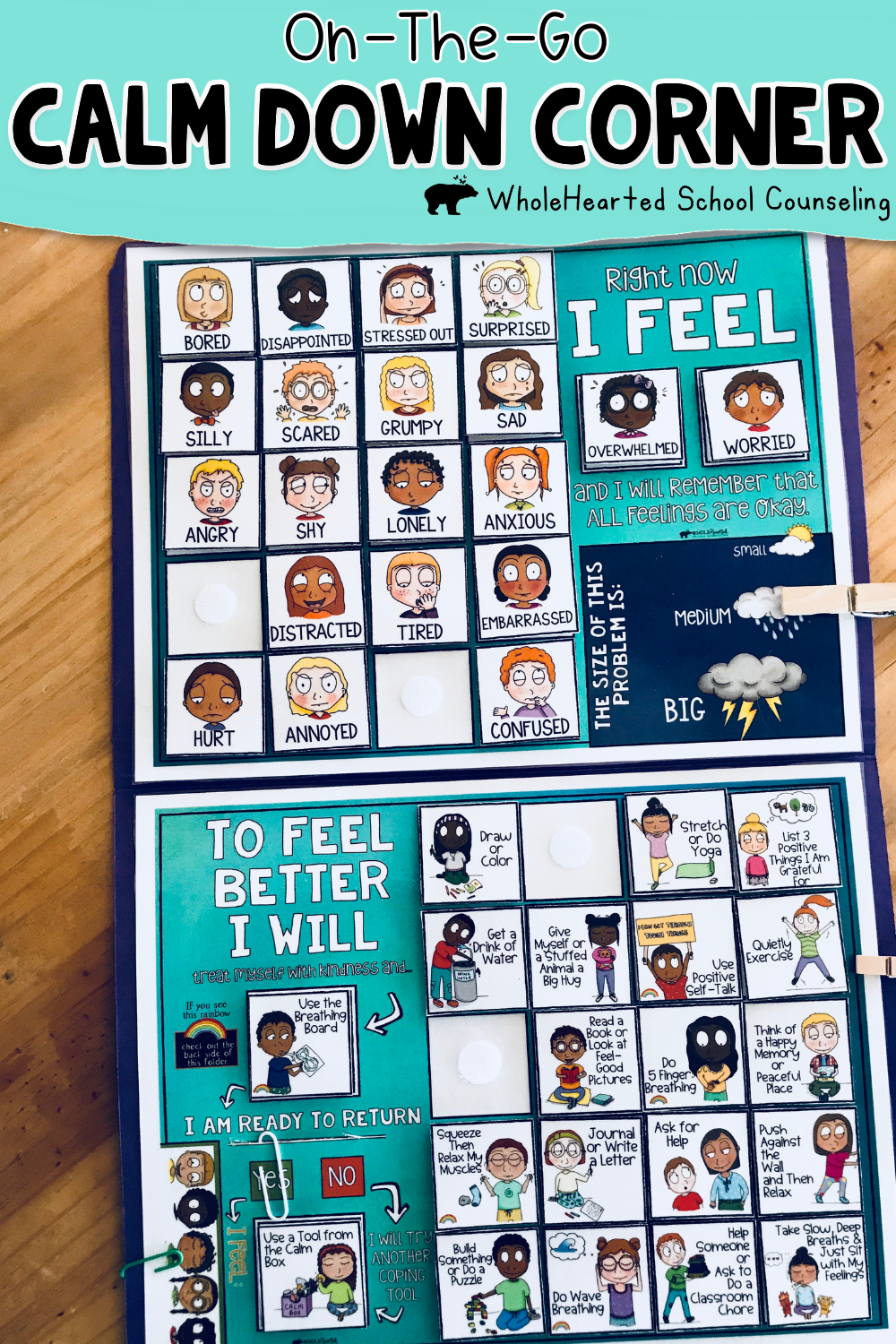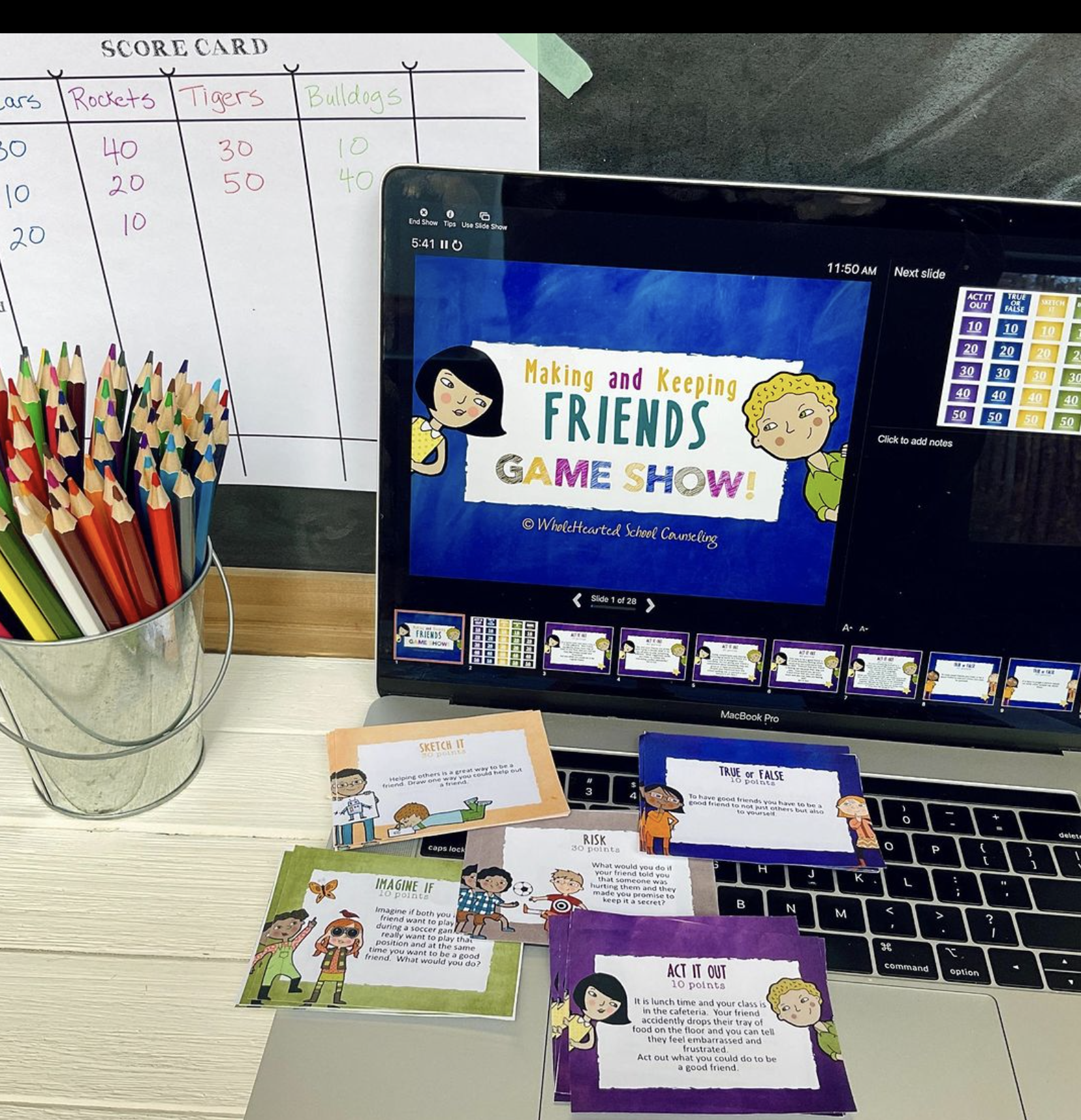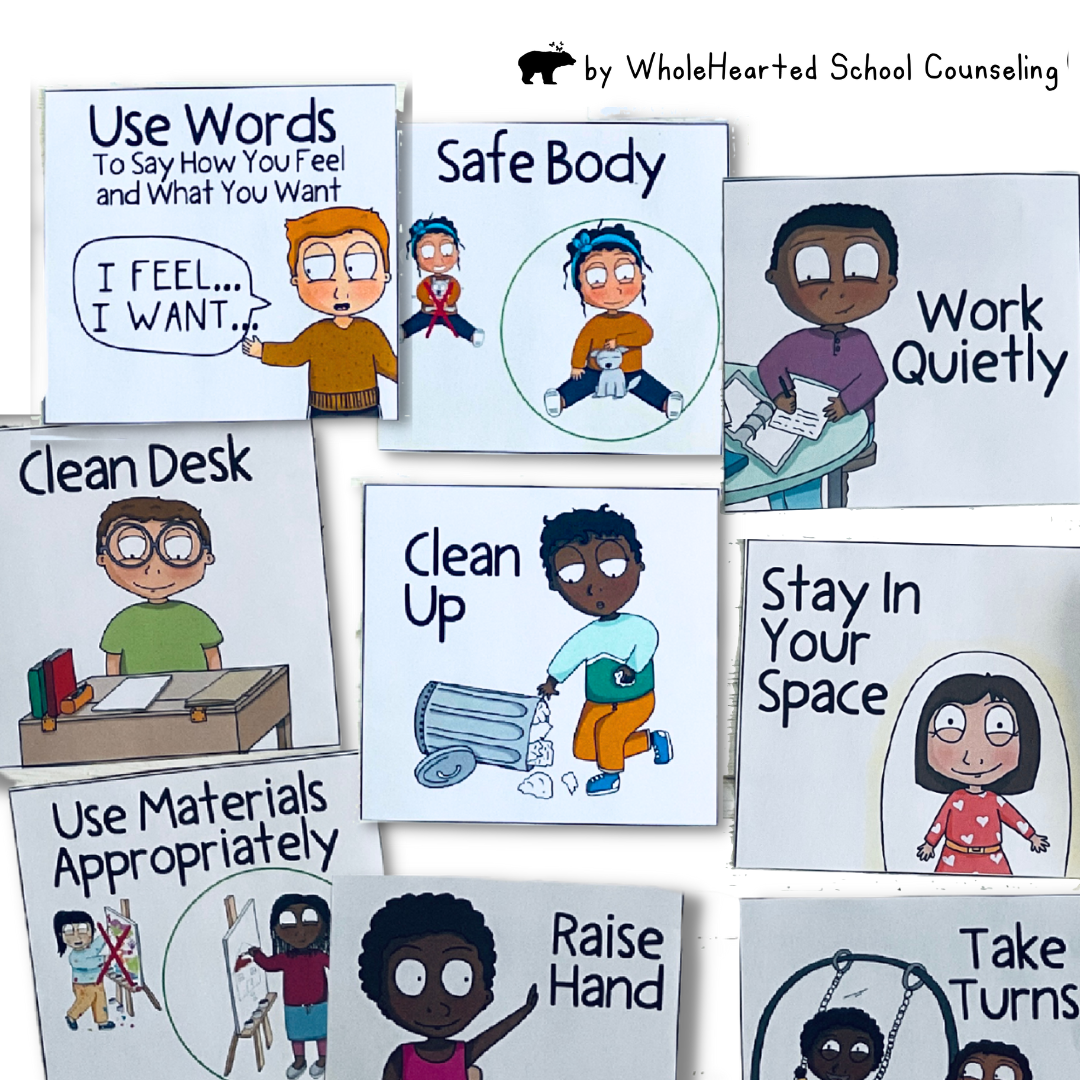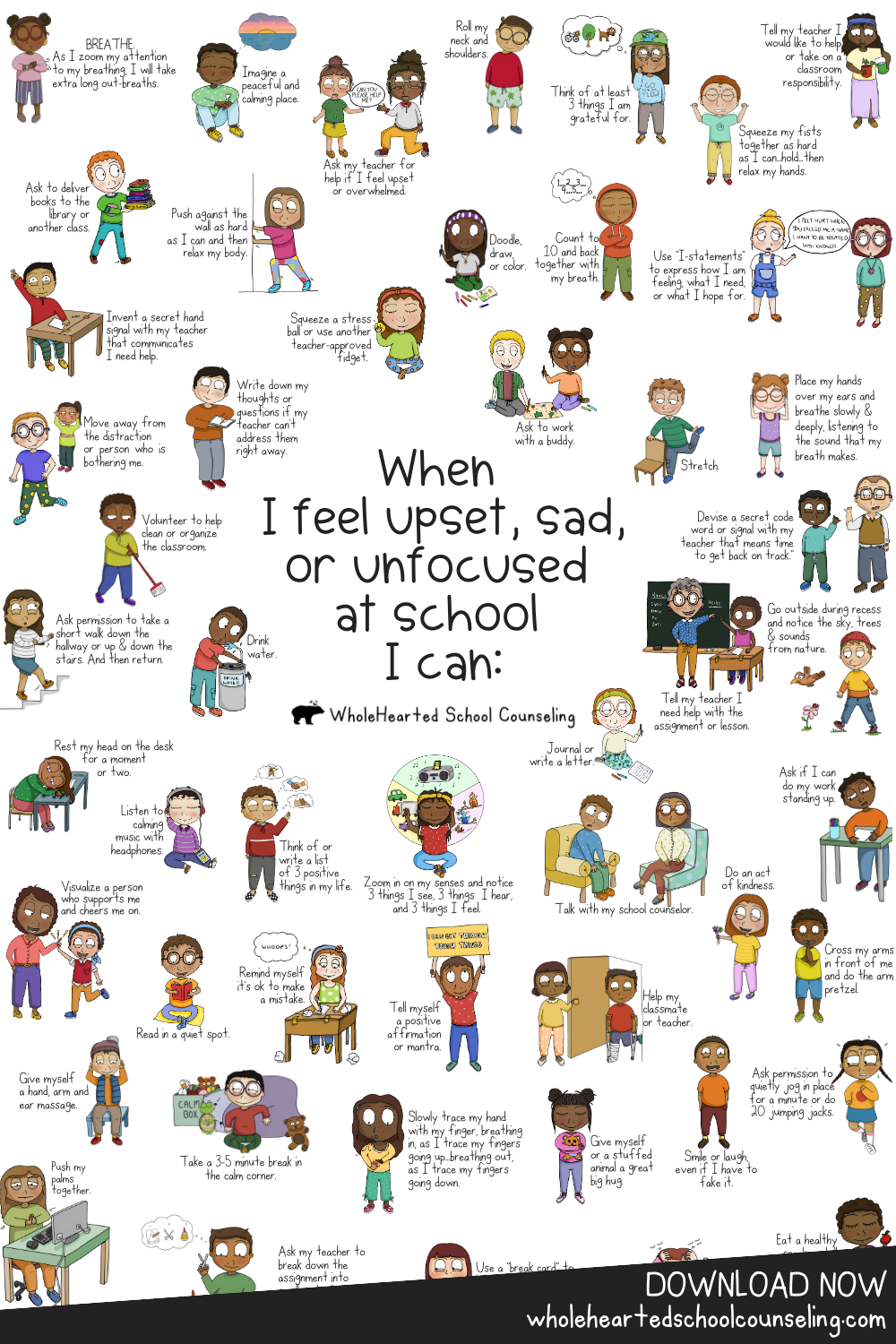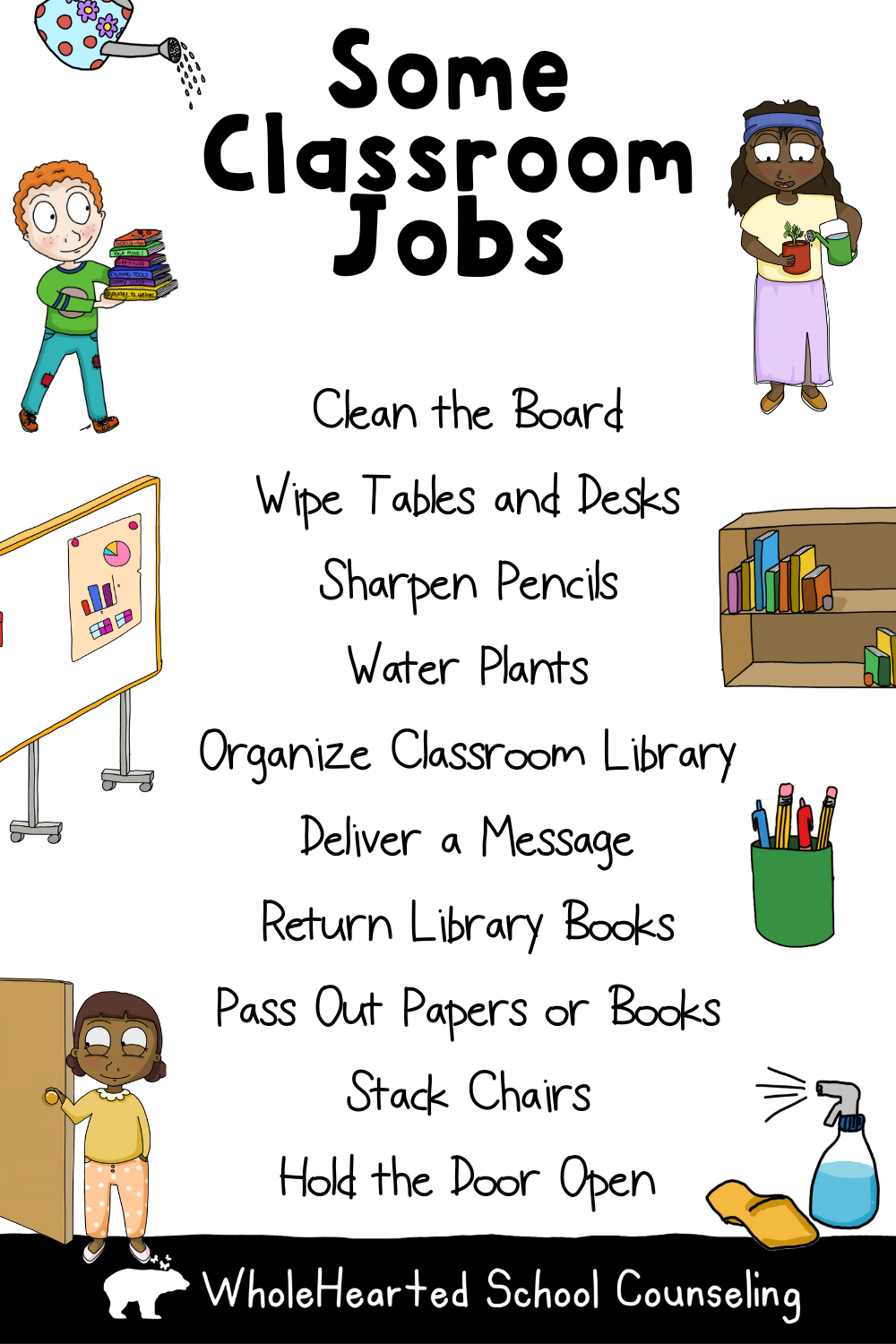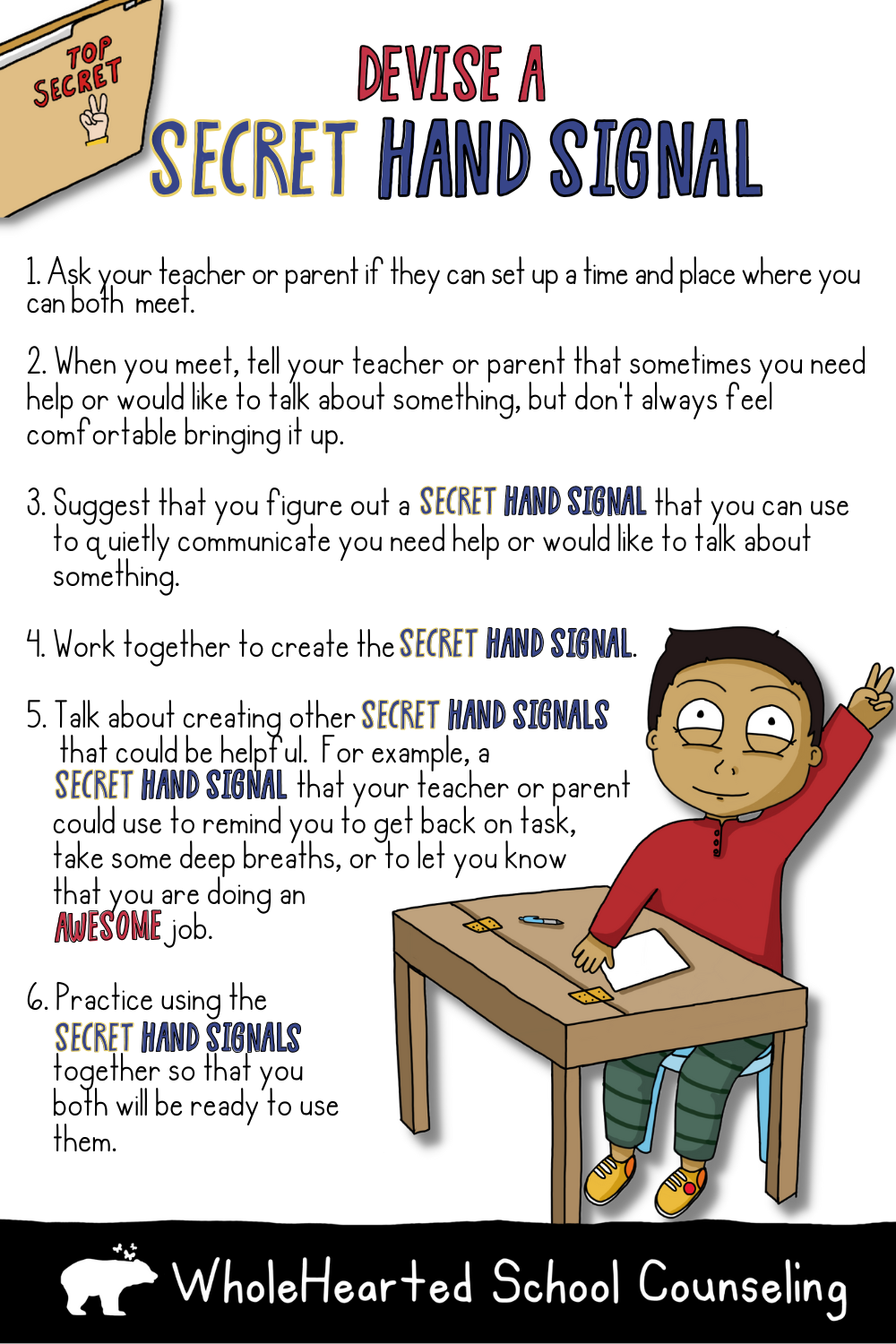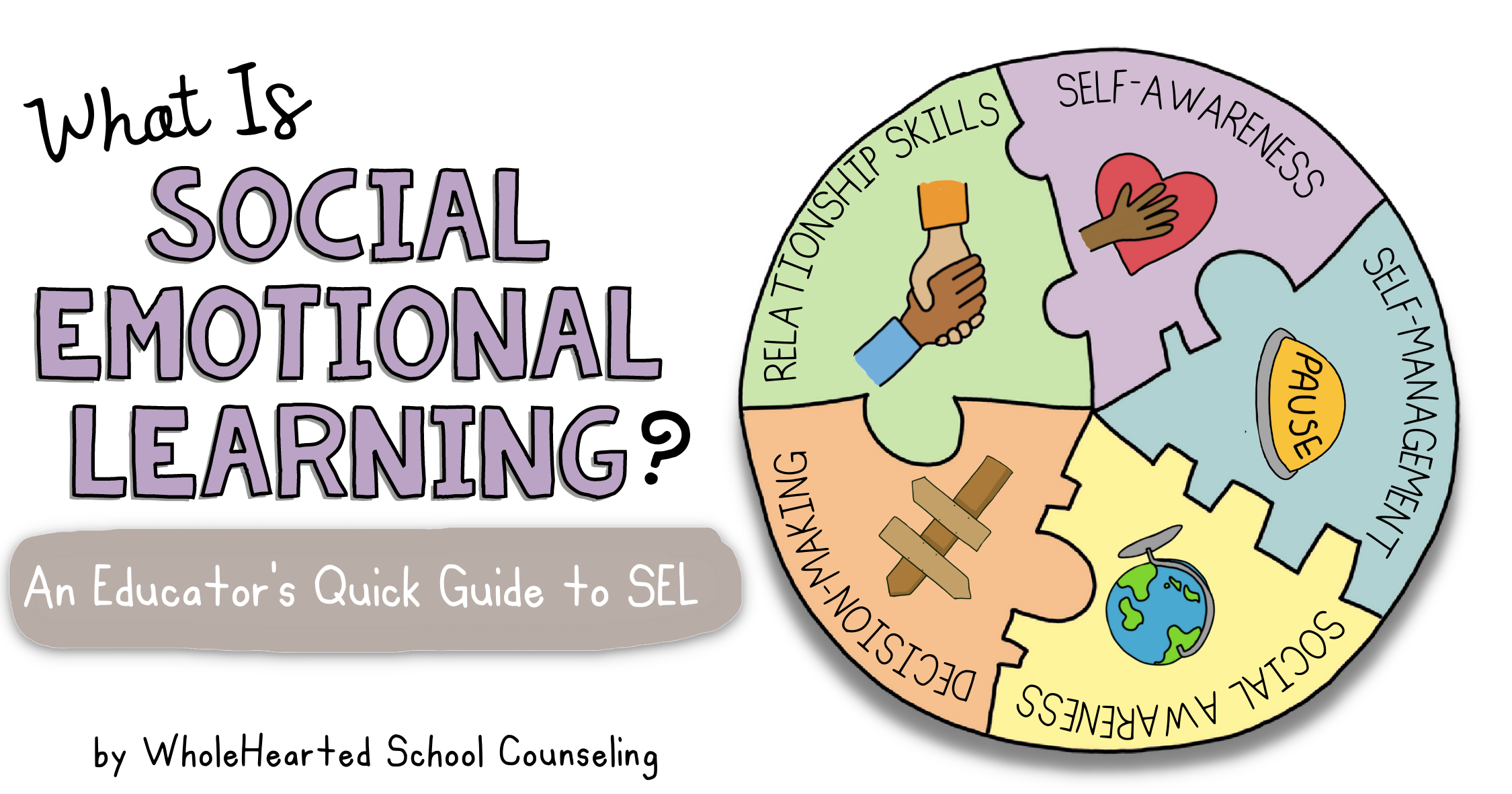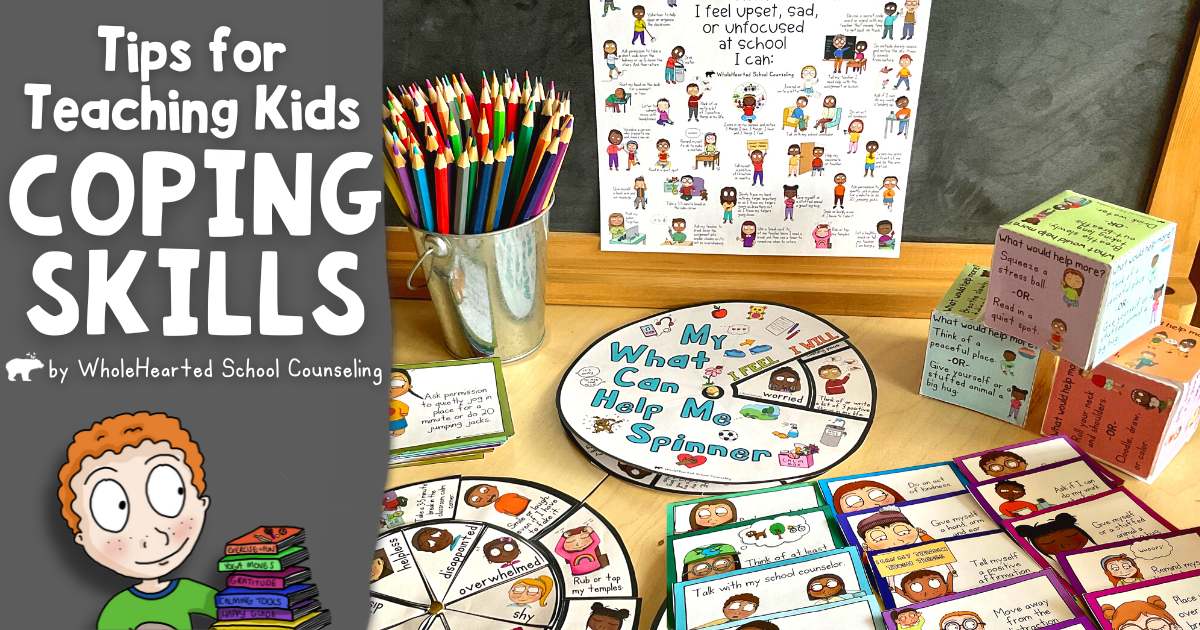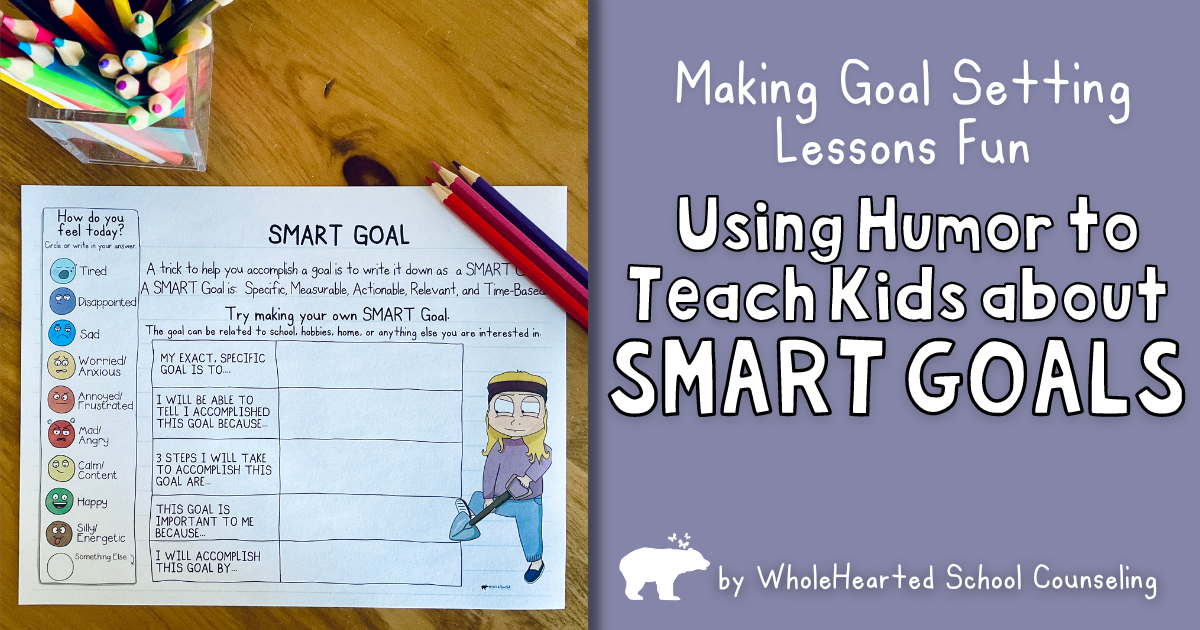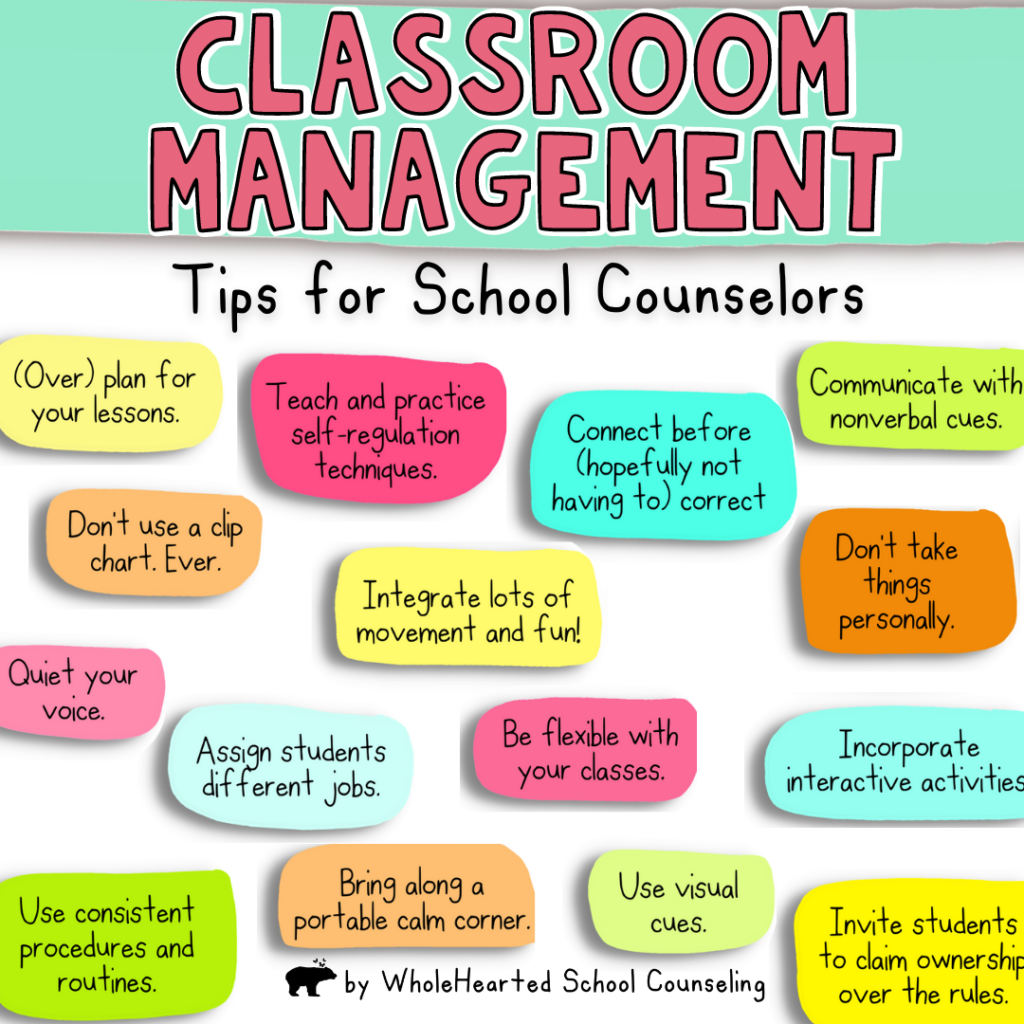
Elementary school counselors end up spending quite a bit of time in the classroom. But here’s the thing – not many of us received proper training on how to actually manage a class! Even though I had been a teacher for a very short period of time, I still struggled big time with classroom management. During my first 1-2 years as a school counselor, I felt like a fish out of water. I relied on memories of what teachers did when I was a student so very, very long ago and on the few minutes I observed teachers before taking over their class.
Even a few years into it, there were plenty of days when I still knew that my classroom management could use some work. Especially on those days when students were cooped up in the building too long. Or I walked into a classroom that was being run by a substitute teacher. (Bless substitute teachers for doing what they do). And on days right before a holiday break, forget it. All bets were off. )
Along the way, with tons of trial and error, I discovered some small things that were incredibly helpful.
That’s not to say that these strategies worked every single time. But on the days that they did, what a world of a difference it made in helping me to deliver classroom lessons.
So here are some classroom management dos (and don’ts) tips for you.
1. Plan for your lessons.
When it comes to managing behaviors in the classroom, a well-planned lesson is an absolute game-changer. It’s like your secret weapon! Seriously, if you take the time to plan ahead you’ll save yourself a ton of time and stress during the actual lesson. So, how can you make sure you’re on top of your game?
- Is your lesson developmentally appropriate and engaging? Have you considered how to differentiate the lesson to meet all of your students’ unique needs to keep them engaged? Does your lesson help all your student feel to feel supported and at the same time challenged?
- What about the structure of your lesson? Are you including a fun ice breaker and attention grabber? What are the main ideas you’d like your students to take away and how are you delivering that information? What about hands-on activities for students to build the targeted skills? And a wrap-up that will help students to reflect on what they’ve learned?
- Do you have all the materials you’ll need? What about materials your students will need? If you’re using worksheets, is everything printed up? Art supplies? Books? Game materials?
- If you’re breaking up students into small groups or partners, what format will use? Do you want groups to be based on where they are already sitting? Or would it work better to group students randomly? Will you let your students choose their partners? Or is that something better for you to be in charge of?
- If you’re planning to use any tech in the classroom, make sure you’re familiar with it. You probably don’t want to be wrestling with cords and buttons with 25 kiddos waiting on you. (Although could be a great opportunity to ask for volunteers to help you out. There’s a good chance they will know what to do with all that tech stuff.)
2. Be flexible with your lesson plan.
I know. This sounds like a contraction to tip #1. But really, it’s not. The more you can (over) plan for something, the more freedom you have to be flexible at the same time.
It’s like carrying a toolbox full of tools with you into a project. You know that you’ll probably not have to use all of them. But if something unexpected comes up while working on your project, you still have other tools you can draw from.
On top of that, remember this. Although you have objectives that are valuable to cover and you are keeping formative or informal data, students are not tested on SEL topics. This allows you to be more flexible and go with the flow if that’s what is called for.
You may have reviewed and prepared a lesson and think students are going to nail it, but when you walk in, the students have just come in from recess and are sweating and arguing about who won kickball. You instantly decide to pivot your lesson and instead teach about being a good teammate, sportsmanship, losing with pride, and not boasting when you are the winner.
Thinking on your feet and supporting the needs of the classroom in that moment is just as much as a super power classroom management skill. Plus, all that problem solving and solution finding is what school counselors are trained to do.
Use your skill set to pause, reassess your lesson objective, and provide what will help your students have successful interactions in the future.
Remember, SEL topics are repeated and reinforced throughout the year in many different forms, and throughout students’ entire school career. So if they don’t grasp the topic the first time you present it (but they are learning and engaged), don’t put added stress on you or the students. Keep this information in the back of your mind and use it to drive a small group or individual counseling if necessary.
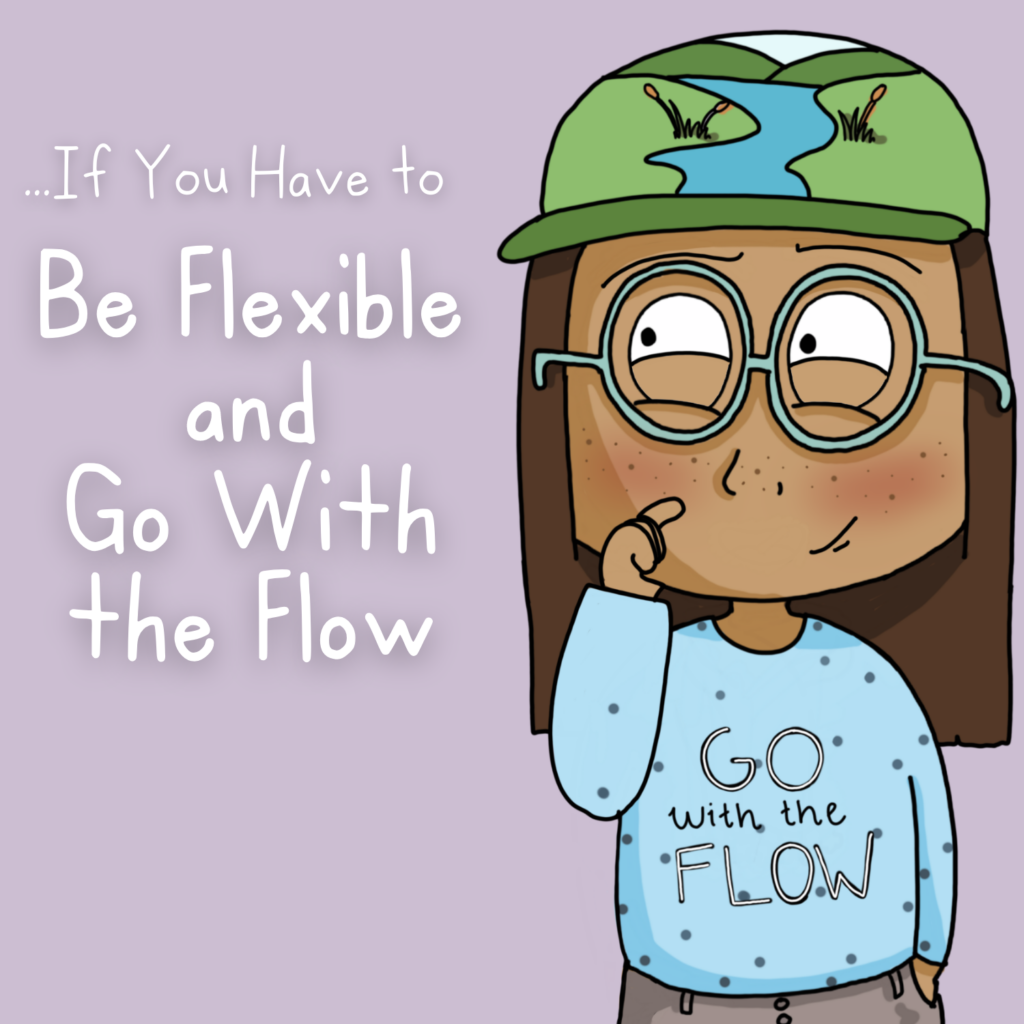
3. Incorporate lots of movement and fun!
Children are not designed to be statues, glued to their seats for minutes or hours on end. You want your students to learn? Then get them moving and interacting. Or as Fred Rogers used to say, “…for children, play is serious learning.”
And if you don’t provide opportunities for movement, play, and interaction? You can count on kids creating those opportunities for themselves. Which invariably will end up looking like behavior problems.
In other words, one of the best preventative strategies you can use is to make sure to incorporate plenty of opportunities for your curious & energetic learners to get up, stretch, engage with one another.
Breaking up the class time into smaller chunks will keep everyone more attentive. It’s like giving them a chance to recharge their social batteries and keep the energy flowing. Plus, let’s be honest, expecting young minds to stay quiet for extended periods is a bit of a tall order.
It’s super easy to pop in structured movement. You can start off each class with a few mindful brain breaks. or stretching and yoga poses designed for the classroom. And then when it’s time for classroom discussion, rather than asking students to sit quietly and raise their hands if they know the answer, invite all of your students to quietly stand up if they agree with the question or stay sitting down if they don’t. You can also have students show their answers by having them move to different parts of the room depending on their response.
Just the mere act of standing up sends oxygen to the brain. And oxygen to the brain means better focus and learning.
Allow yourself permission to have fun with your students. Your counseling SEL lessons should not be stressful for students or just as important, for you! It’s okay for there to be noise, games, playing, and fun! It is in these moments that we have the opportunity to provide on the spot feedback, observation, & support with emotional regulation, friendship or social skills.
4. Invite students to claim ownership over the rules.
For example, you can something like, “Hey, folks, when you’re doing group work, what are the rules? How should you treat each other?”
By actively involving them in this process, you’re fostering a sense of responsibility and accountability. Plus, it’s a great way to reinforce those expectations and ensure that everyone is on the same page.
This tip is not just for the beginning of the school year, but an important conversation to weave in throughout the ensuing months.
5. Have consistent procedures and routines for counseling lessons.
Having clear procedures, routines, and expectations in place creates a structured environment where students know what to expect. This predictability helps minimize confusion and reduces disruptive behaviors.
For example, starting each counseling lesson with a consistent opening routine, such as a brief check-in circle, sets a positive tone and signals to students that it’s time to transition into the lesson.
Or when you walk in the room, students immediately know to go to the carpet and get ready to do a few breathing exercises.
Setting guidelines for active listening, turn-taking, and respecting others’ perspectives helps maintain a respectful and focused learning atmosphere.
When students understand what is expected of them during counseling lessons, it helps minimize confusion and potential conflicts. Clear expectations provide a framework for appropriate behavior and empower students to make positive choices.
6. Don’t assume just because you are the school counselor, everyone will listen or want to talk to you.
I still remember the first time I walked into a classroom and got the cold shoulder from a student. I thought to myself, “But, I’m the school counselor, I’m here to help, everyone should want to talk to me.” But that certainly will not be the case, even though you are absolutely amazing.
Try not to take things personally. Remove your own emotion from the student behavior. And remember that behavior is a form of communication.
7. Don’t use a clip chart. Ever.
Even if the classroom teacher uses a clip chart, avoid participating in using it yourself.
Although well intentioned, the clip chart often has the effect of shaming kids. It’s is a public way of displaying who is struggling with emotional regulation, who might be having a hard day, or who has other unseen or unmet needs that makes it more difficult for them to avoid blurting out or sitting on their carpet square perfectly criss-cross apple sauced with their hands in their lap.
Opt for using a Calm Corner instead (which you can read more about in a blog post here.)
8. Bring along and use a portable Calm Corner.
If the classroom teacher doesn’t already have a Calm Corner set up in the classroom, bring your own portable calm corner with you for guidance lessons. (Or better yet, offer to help the teacher out with creating one for her room. Or surprise her with one you’ve put together before hand.)
You’ll want to make sure that students know when are acceptable times to utilize something like a calm corner. In addition to modeling and practicing the various classroom appropriate coping skills they can use.
9. Quiet your voice.
This trick is one that my dad shared with me years and years ago. I’ve found it not only to work well in the classroom, but also at home with my two children, as well (if only because it tricks and confuses them into wondering why mom is not yelling at them right now….haha.)
In the classroom, when you lower your voice, it forces students to take notice and pay better attention, since it is not so easy to hear what you’re saying. It’s sort of a natural instinct to not want to miss out. It can help bring down the energy level in the room by redirecting their focus to what you’re saying.
Lowering and quieting your voice also helps to create calmer energy. Which can assist in co-regulation with your students.
10. Incorporate interactive activities.
Engage students through hands-on activities, group discussions, and interactive games to keep them actively involved.
Not only do these activities make the learning experience more enjoyable and memorable for the students, but they also work wonders for classroom management. You see, when kids are actively engaged in more hands-on learning they’re less likely to get bored or distracted, which means fewer disruptions and behavior issues to address.”
When students are actively involved in the lesson, their attention and energy are directed toward the learning task at hand. They’re too busy participating and collaborating to engage in disruptive behaviors. It’s like they become active partners in the lesson, and that sense of ownership and engagement helps to maintain a positive and focused classroom environment.
Not only that, but interactive activities also create opportunities for students to practice essential social and emotional skills. Through group discussions and collaborative tasks, they learn to communicate, cooperate, and respect one another’s opinions. These skills, in turn, contribute to a more harmonious classroom atmosphere and reduce conflicts or disruptions.
Hands down, my students’ favorite lessons were always the ones that were more game based. Which is why I went a bit nuts and created over 50 different social emotional learning lessons in the format of quiz shows, similar to Jeopardy. Although instead of answering with questions, students would answer with role playing / acting out, drawing, answering true or false questions, imagination, and team building. Some of the most popular Game Shows which really got my students engaged were lessons on Making and Keeping Friends, Conflict Resolution, Coping Skills, and Careers.
11. Connect before (hopefully not having to) correct
Take the time to form connections with your students. Not just in the classroom, but outside, as well. Spend a few moments playing basketball with them during recess. Offer a genuine compliment in the hallway. Or show interest in what they are creating in art class.
This can be especially helpful with students you suspect will most likely keep you one your toes when you’re teaching guidance lessons.
This initial connection works wonders because it sets a positive tone right from the start. It not only increases the chances of them making positive behavior choices class lessons, but also enhances their responsiveness if I need to redirect them. If students trust you respect them, you will likely get respect back in return.
12. Use visual cues.
When I incorporated visual cues into my lessons, it was like having a silent assistant that supported me in maintaining a structured and organized classroom environment.
The visual schedules, for example, provided a clear roadmap of our lesson activities. Students could anticipate what was coming next and transition more smoothly without confusion or distractions.
Visual cues also worked wonders for students who were more visual learners or benefited from additional support in understanding and remembering instructions. Visual aids offered a different mode of communication, complementing verbal explanations and helped cater to diverse learning styles.
13. Teach and practice self-regulation techniques.
This one is sort of a no-brainer for school counselors. Seeing that teaching and practicing self-regulation techniques is such a large part of the job.
So it’s pretty cool to think that when you’re teaching deep breathing, mindfulness exercises, and other coping skills that it’s having a net positive impact on classroom management.
I found that practicing self-regulation techniques with my students was a game-changer when it came to promoting a calm and focused learning environment. When students learn how to recognize when their emotions are getting overwhelming and gain the ability to pause, take a deep breath, and bring themselves back to a state of calm, it invariable makes classroom management easier.
When students are equipped with effective techniques to manage their emotions, they become more focused, attentive, and less likely to engage in disruptive behaviors.
14. Assign students different jobs.
If you notice that a student looks bored or is starting to get a bit spirited in class, it might be time to ask him or her to help you out. Not only will it shift his or (wandering) focus, but it can also genuinely be a help for you as well.
You could ask for help in carrying books, passing out worksheets or art supplies, taking notes on the board, keeping track of the time.
When students have specific roles and responsibilities, it creates a more structured and organized environment. They understand that they have a vital part to play in the smooth functioning of the classroom. Whether it’s being a line leader, pencil sharpener, or a materials distributor, each job contributes to the overall success of the classroom community.
(As an added plus, giving students different jobs also teaches them important life skills, such as responsibility, accountability, and teamwork. They learn the importance of being reliable and completing their tasks to the best of their abilities.)
15. Use nonverbal cues.
And last but not least, let me tell you about one of my favorite classroom management techniques: communicating with students nonverbally. It’s amazing how powerful and effective nonverbal cues can be in redirecting behavior.
One way I utilized nonverbal communication was by physically positioning myself near students who were on the verge of a behavior mishap. Sometimes, just by walking over and standing nearby, I could send a subtle message that I was paying attention and that their behavior was being monitored. This nonverbal intervention often helped them pause and reconsider their actions, without the need for a verbal direction.
Additionally, I discovered the power of developing secret hand signals with individual students. This technique worked wonders in discreetly re-focusing their attention and reminding them of expectations without causing disruption to the whole class.
For example, we might have agreed to a simple hand gesture, like tapping my temple or giving a thumbs-up, that signified to a particular student that they needed to refocus or make a better choice. It was our private nonverbal code that communicated understanding and redirection.
Nonverbal communication can be integrated into other aspects of classroom management, too.
For instance, using eye contact can convey messages of encouragement, acknowledgement, or even a gentle warning. A brief but meaningful glance can reinforce positive behavior, let a student know they are on the right track, or remind them to stay on task. Or you might raise your hand or give a signal like clapping once to indicate it’s time to wrap up a task or gather students’ attention.
What are some other classroom management tips you have? Please share! I’d love to hear!!


